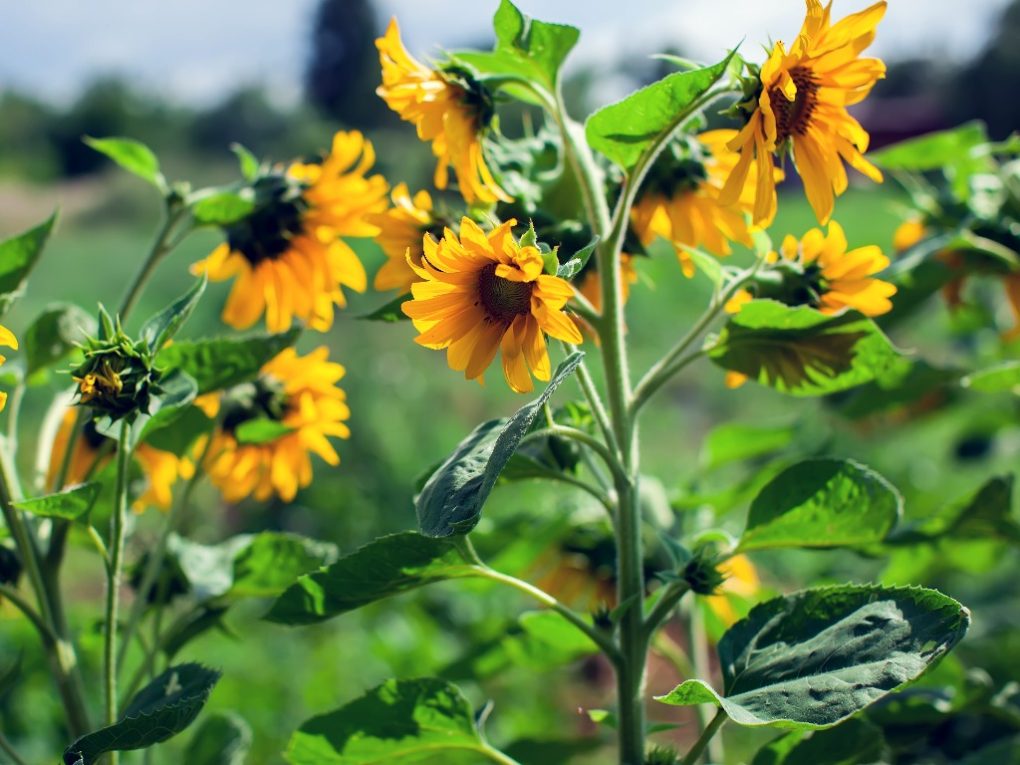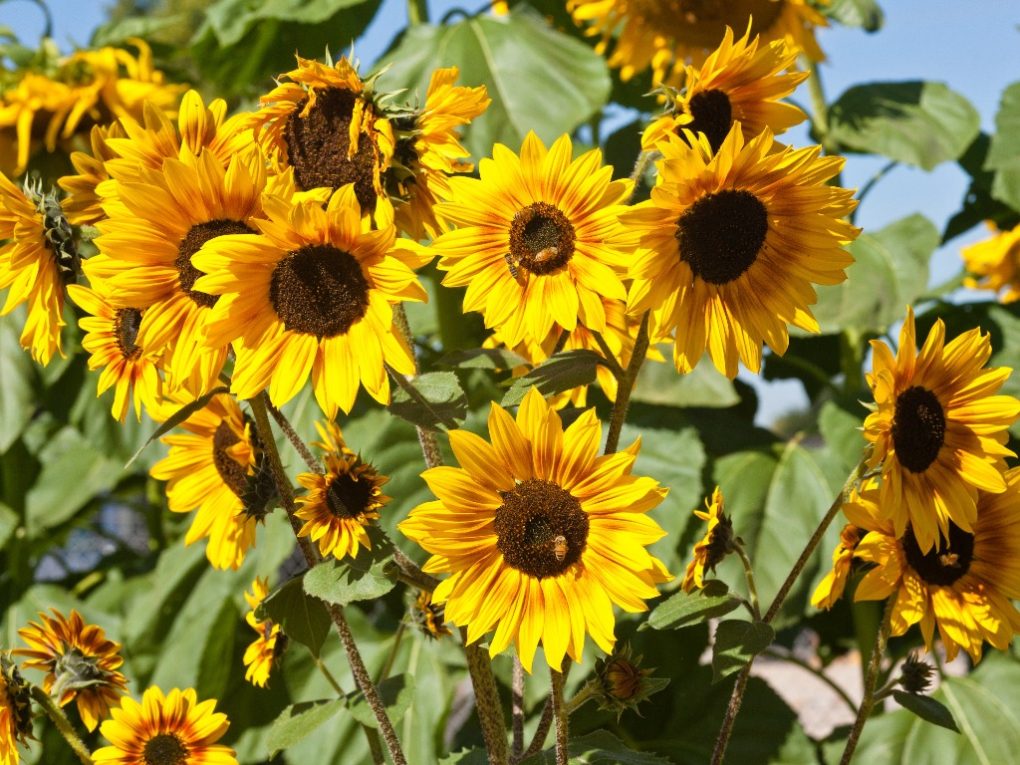Can Sunflowers Have Multiple Heads: Exploring the Fascinating Phenomenon of Polycephaly in Sunflowers
Yes, sunflowers can have multiple heads. This natural phenomenon occurs in some sunflower varieties, where multiple flower buds form on a single stem. These flower buds then develop into individual flower heads, creating a cluster of blooms on a single plant. Sunflowers are among the most popular flowers in the world due to their vibrant yellow petals and ability to grow up to 12 feet tall.

Multiple-headed sunflowers are not a discovery, as wild sunflowers and some domesticated varieties have been known to produce more than one head per stem. However, it is still a rare occurrence and can be a surprise to gardeners who are expecting a single head to bloom. Several factors can cause a sunflower to produce multiple heads, including genetics, environmental adaptation, and exposure to certain chemicals.
Table of Contents
Sunflower Anatomy
Head Structure
According to UGA, sunflowers have a large, round head comprising many tiny flowers. Each flower has five petals that surround a central disk. The disk is made up of many small flowers that are tightly packed together. These flowers are called disk florets and are responsible for producing the sunflower’s seeds.
The sunflower petals are usually yellow, but I’ve seen orange, red, or brown petals when I visited a sunflower farm. The disk florets are typically brown or black, and they are surrounded by small, green bracts that are called phyllaries.
Flower Formation
Sunflowers are annual plants that grow from seeds. They typically grow between 5 and 12 feet tall, although some varieties can grow even taller. The stem of the sunflower is thick and sturdy, and it is covered in small hairs.
As the sunflower grows, leaves are arranged in a spiral pattern around the stem. The leaves are large and green, covered in small hairs that help protect the plant from insects and other pests.

Once the sunflower reaches maturity, it begins to produce its characteristic head. The head is made up of many tiny flowers that are arranged in a spiral pattern. The flowers on the outer edge of the head are usually the largest, while the flowers in the center are smaller and more tightly packed together.
Over time, the flowers on the sunflower’s head will begin to wilt and die. As they do, they will be replaced by new flowers that are still developing. This allows the sunflower to continue producing seeds throughout the growing season.
Factors Affecting Sunflower Head Formation
Genetics
Sunflowers are known for their large, showy flower heads reaching up to 30 centimeters in diameter. While most sunflowers produce a single flower head per stem, some varieties have been bred to produce multiple heads. This is due to a genetic mutation that causes the plant to produce more than one flower head on a single stem; however, this mutation is rare; most sunflowers produce only one flower head per stem.
Environment
Environmental factors can also play a role in sunflower head formation. Sunflowers require full sun and well-drained soil to thrive. They may only produce a flower head if grown in the shade or wet soil. Additionally, extreme weather conditions such as high heat or drought can cause sunflowers to produce multiple flower heads to compensate for the stress.
Cultural Practices
Cultural practices such as fertilization and pruning can also affect sunflower head formation. Over-fertilization can cause sunflowers to produce multiple flower heads, as can pruning the plant back too severely. However, it is important to note that these practices can also negatively affect the plant’s overall health if not done properly.
Genetics, environmental factors, and cultural practices can affect Sunflower head formation. While some sunflowers are bred to produce multiple flower heads, this is rare in most varieties.
Cultural practices such as fertilization and pruning can also affect sunflower head formation but should be done cautiously to avoid negative effects on the plant’s overall health.
Multiple Head Formation in Sunflowers
Natural Occurrence
It is not uncommon for sunflowers to have multiple heads; some varieties are bred specifically for this trait. This phenomenon is caused by a genetic disorder called polycephaly, which produces more than one flower head on each stem.

While rare, polycephaly can occur naturally in wild sunflowers and their different varieties and cultivars. The condition is due to a mutation in the plant’s DNA in these cases. It is important to note that having multiple heads does not necessarily mean that the sunflower is unhealthy or damaged. Therefore, it can be a sign of genetic diversity and resilience.
Induced Formation
While multiple head formations can occur naturally, they can also be induced through environmental factors or human intervention. For example, one common cause is excessive fertilizer, which can stimulate the growth of other flower heads.
Pest damage can also lead to the formation of multiple heads, as the plant may respond by producing new heads to compensate for the damage. Similarly, exposure to herbicide drift or chemical residue can cause the plant to produce more heads as a defense mechanism.
Finally, some gardeners may intentionally induce multiple head formations by pinching off the main head or pruning the plant in a certain way. While this can result in a visually striking plant, it is important to be mindful of its potential impact on overall health and growth.
Benefits of Multiple Head Formation
Increased Yield
Having sunflowers with multiple heads can increase the yield of seeds produced. With more heads, there is a higher chance of successful pollination and seed production. This can be especially beneficial for farmers or gardeners looking to harvest sunflower seeds for consumption or sale.
Multiple heads on a sunflower can also provide a longer blooming period, as each head will bloom at a slightly different time. This can be aesthetically pleasing for gardeners and provide a longer period of nectar and pollen for pollinators.
Attracting Pollinators

Multiple heads on a sunflower can also attract more pollinators to the plant. With more flowers, a larger area of nectar and pollen is available for bees, butterflies, and other pollinators. This can be especially important for gardeners looking to attract pollinators and promote overall ecosystem health.
It is important to note that while multiple heads can have benefits, they can also be a sign of stress on the plant. For example, sunflowers may produce multiple heads in response to extreme weather conditions or pest damage. Therefore, monitoring the plant’s health and addressing any issues causing stress is important.
